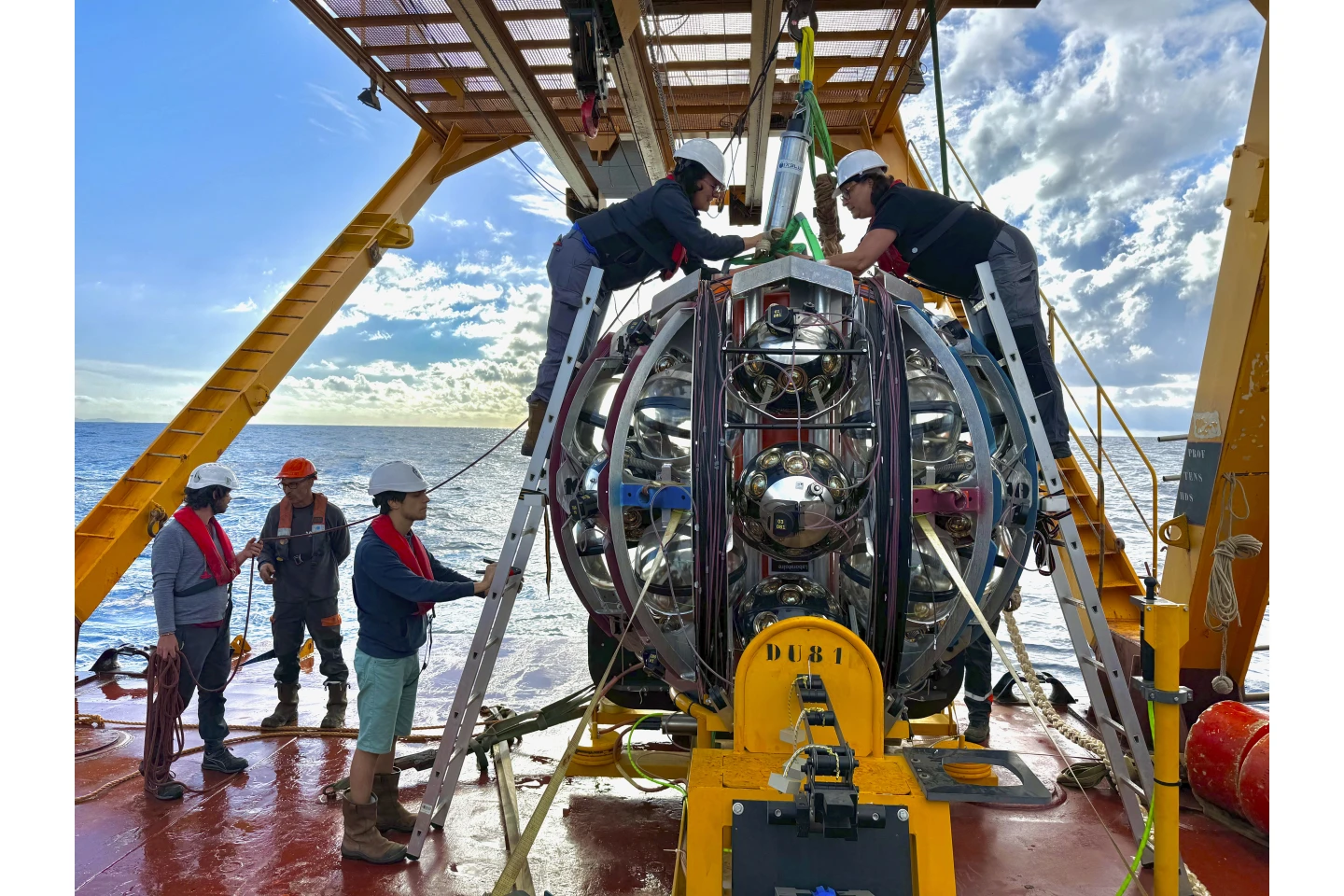Scientists have announced the detection of the most energetic neutrino ever recorded, spotted by a neutrino detector submerged in the Mediterranean Sea, The Associated Press reports.
The elusive particle, known as a “ghost particle” due to its near-massless nature and weak interaction with matter, is estimated to be 30 times more energetic than the previous record holder.
The research, published in the journal Nature, suggests that the neutrino originated from outside the Milky Way galaxy, though its precise source remains a mystery.
Neutrinos are abundant subatomic particles that are constantly streaming through our bodies, emanating from sources like stars and even the sun. Their extremely small mass makes them notoriously difficult to detect. Instead of observing the neutrinos directly, scientists rely on detecting the results of rare collisions with other particles.
In this instance, a neutrino collided with matter and produced a muon, a tiny particle that zipped through the underwater detector, emitting flashes of blue light. Researchers then worked backward to calculate the energy of the original neutrino.
The detector responsible for this groundbreaking discovery is part of the KM3NeT, a deep-sea neutrino observatory still under construction. Neutrino detectors are typically placed underwater, beneath ice, or deep underground to shield them from background radiation. Similar projects include an underground detector in China, which will also be used to hunt down these elusive particles.
The discovery is particularly exciting because of its implications for understanding the prevalence of these high-energy neutrinos.
“It’s a sign that we’re on the right track, and it’s also a hint that maybe there might be a surprise,” said physicist Denver Whittington from Syracuse University, who was not involved in the research.
He suggests the finding could indicate a larger population of these energetic neutrinos than previously anticipated.
While the discovery is significant, pinning down the specific source of the neutrino will require further investigation. As physicist Mary Bishai with Brookhaven National Laboratory noted, more research is needed to pinpoint the exact celestial event or object responsible for launching this extraordinary “ghost particle” across the vast cosmic distances.










The latest news in your social feeds
Subscribe to our social media platforms to stay tuned